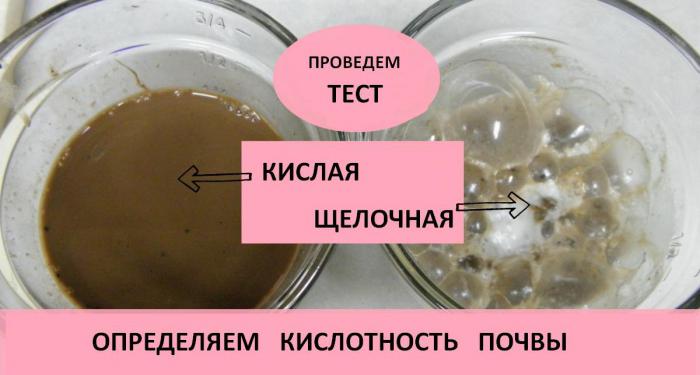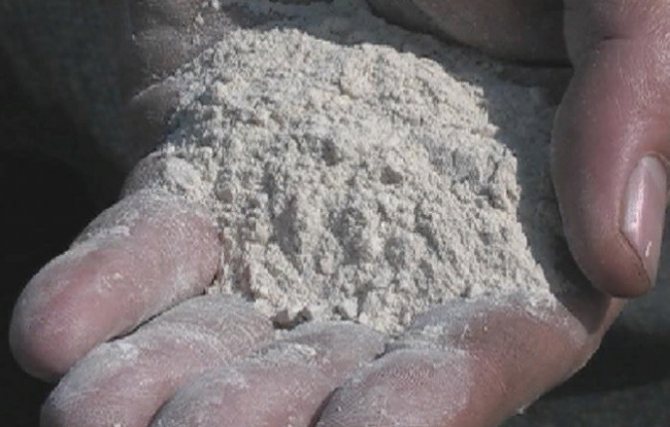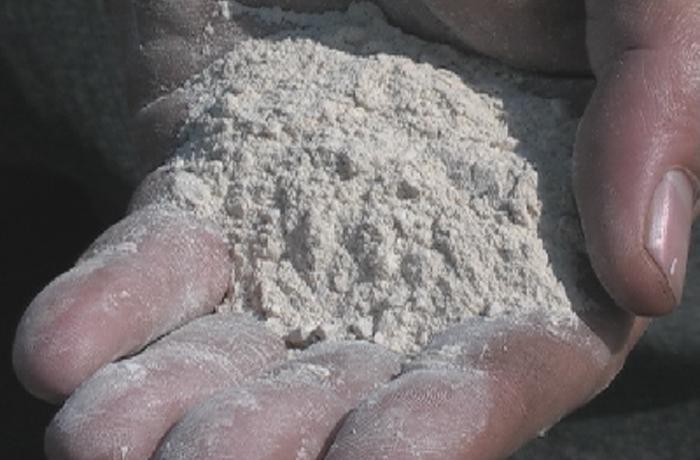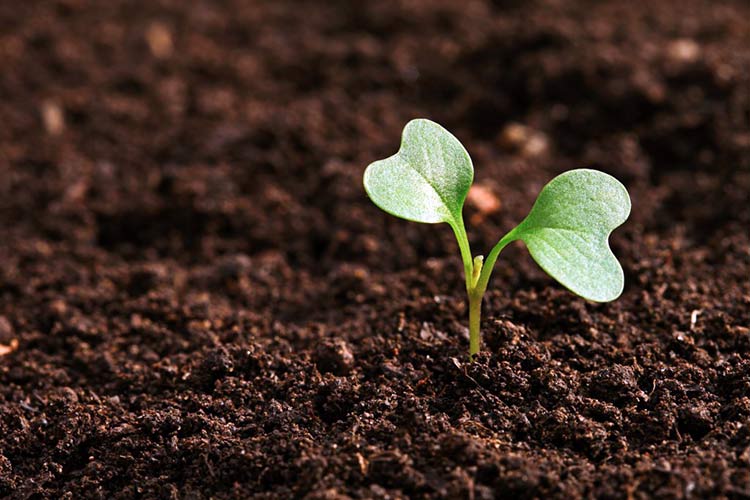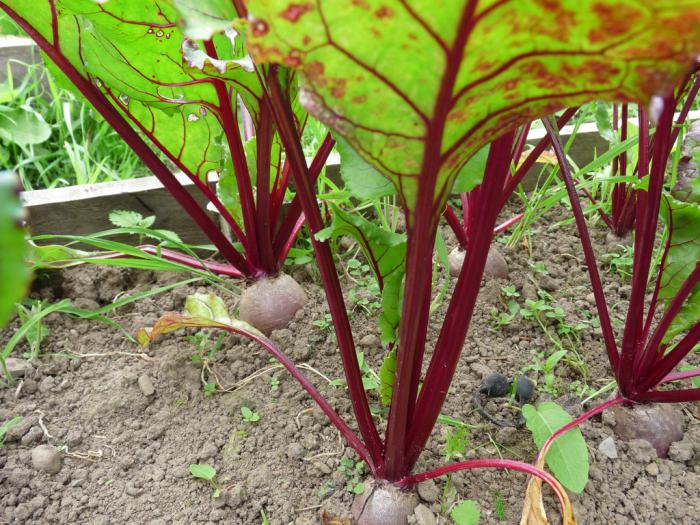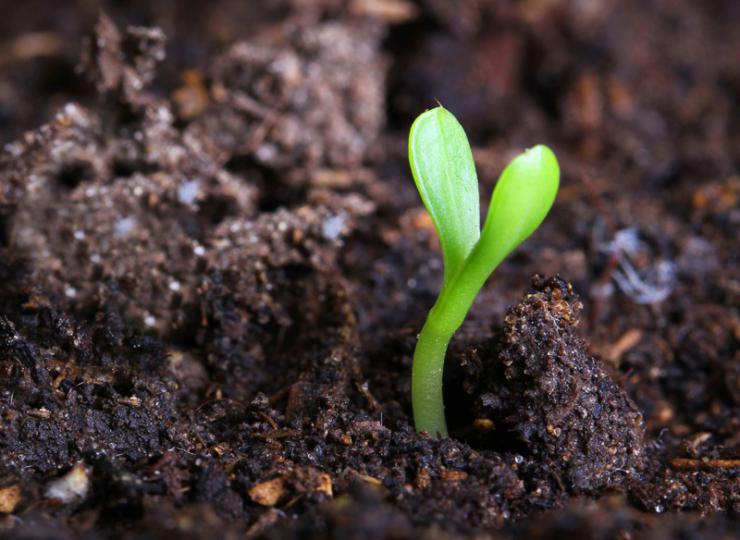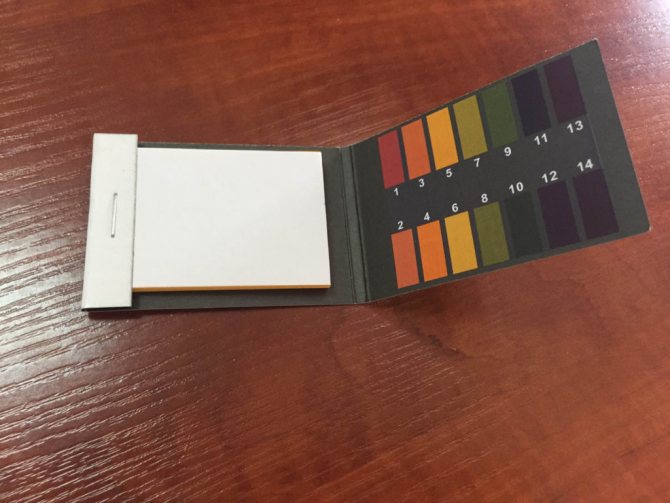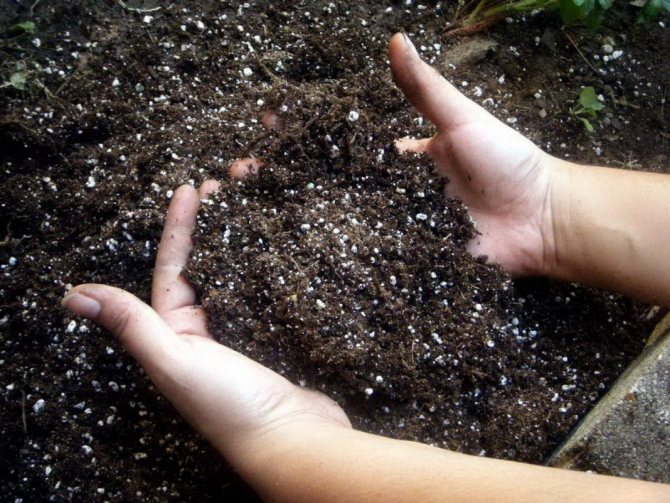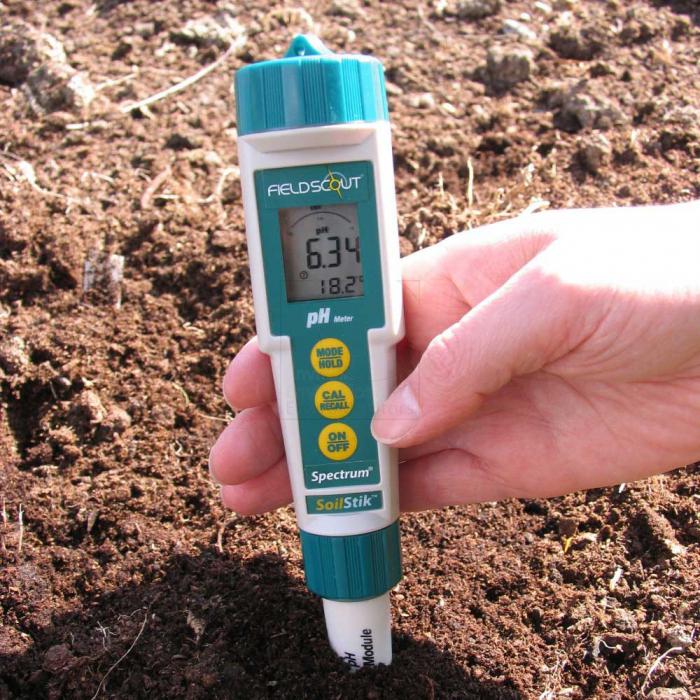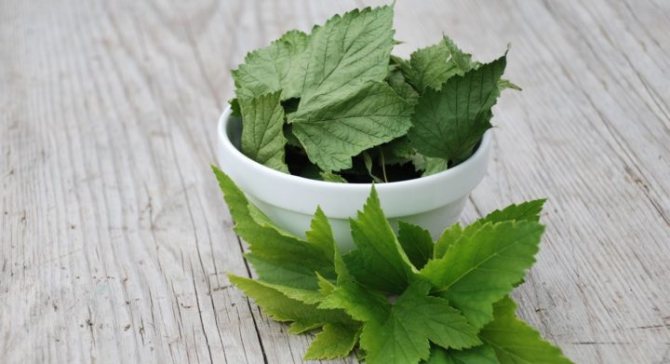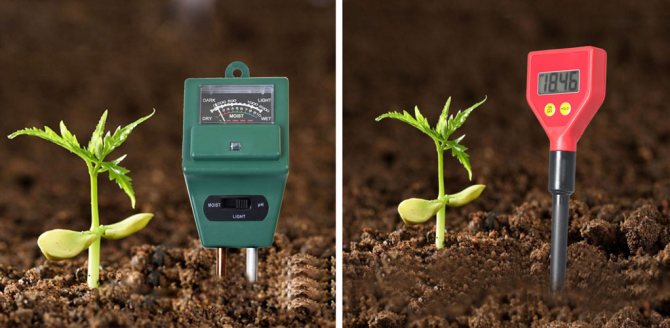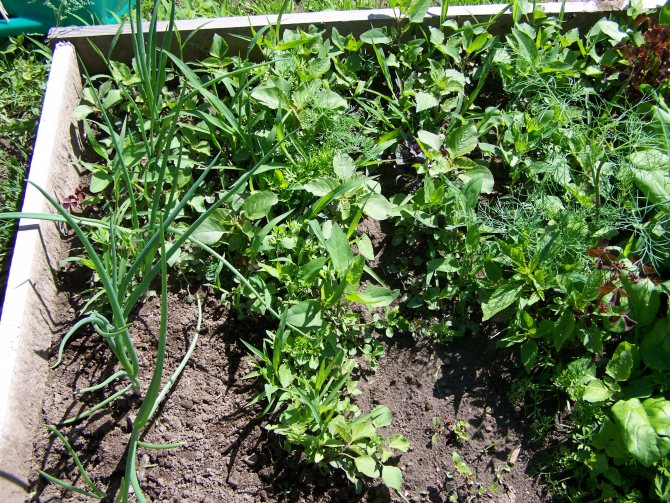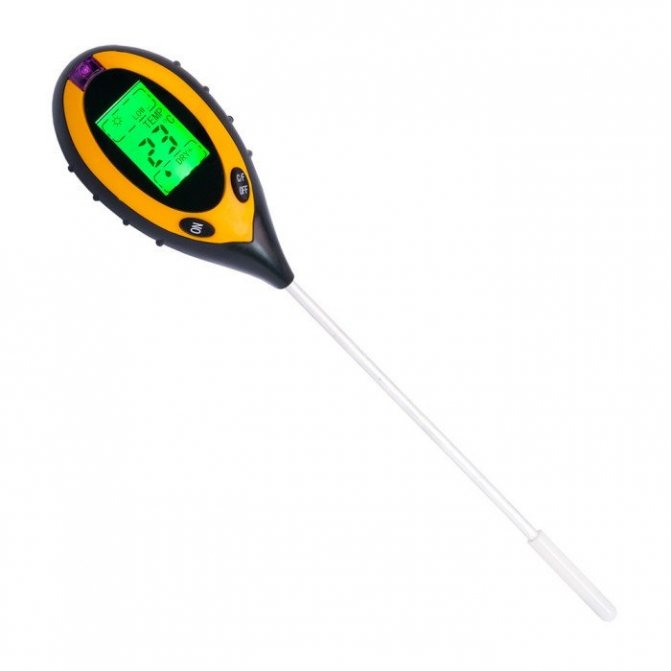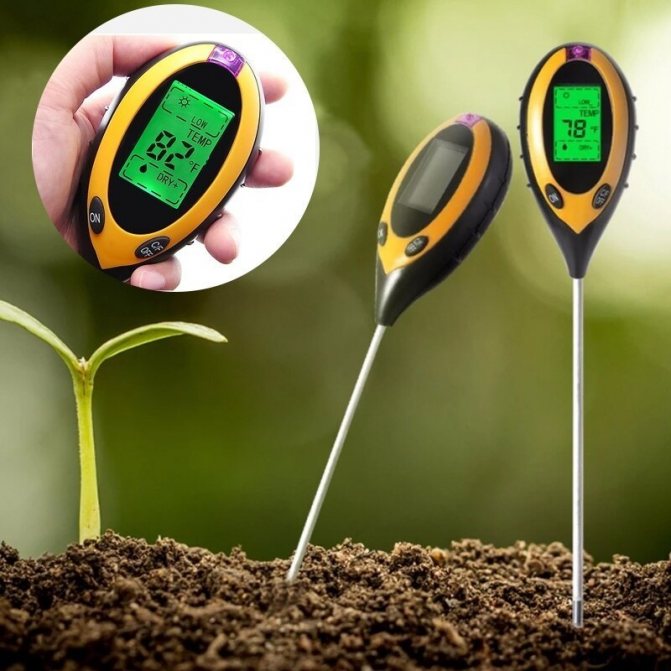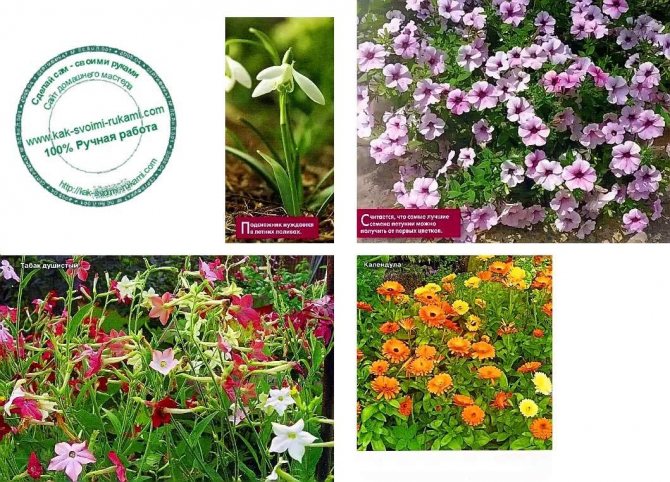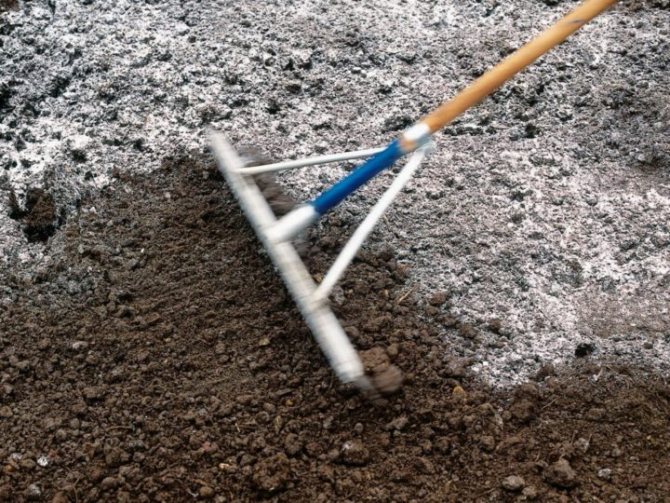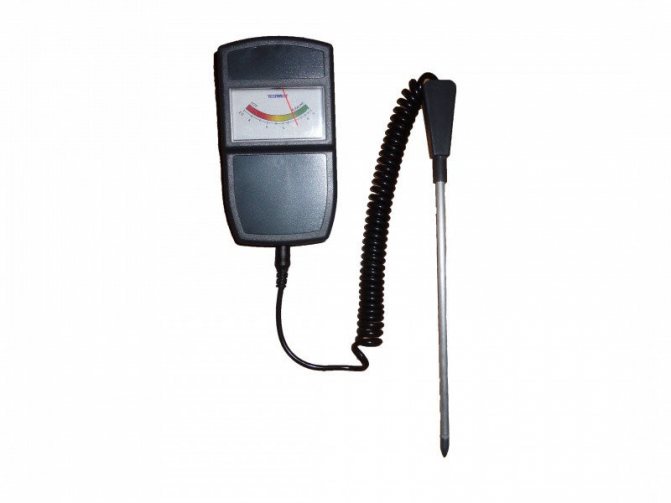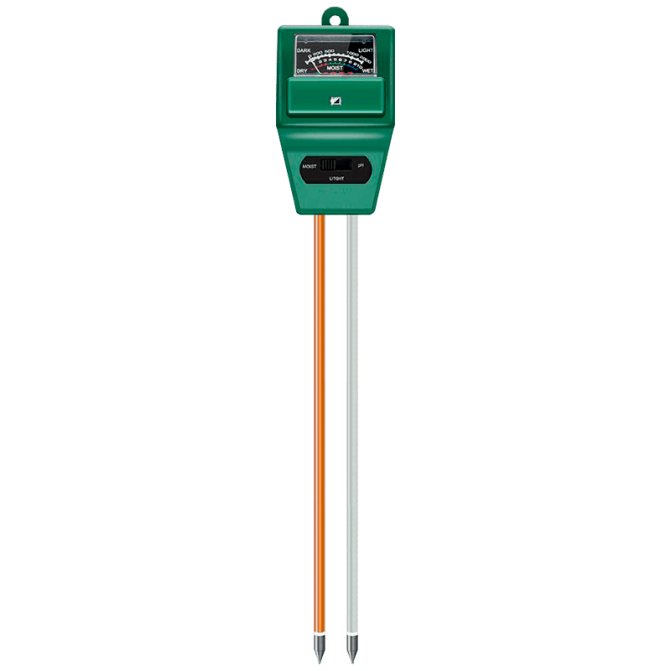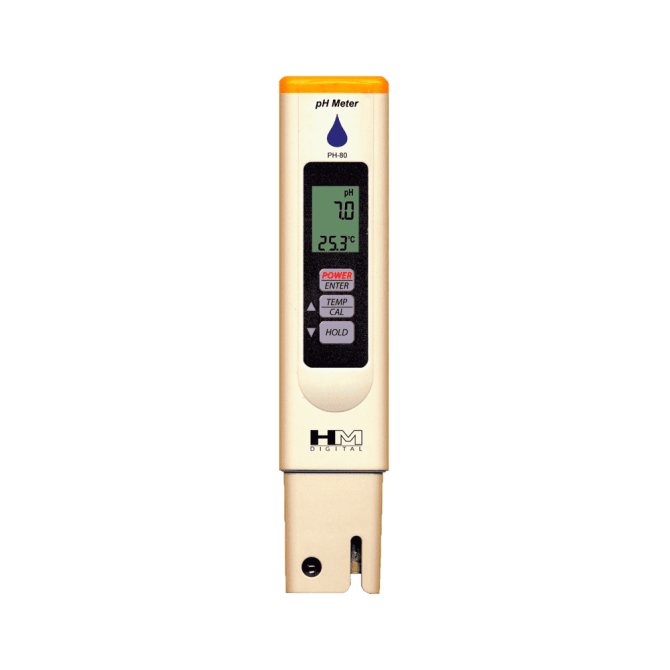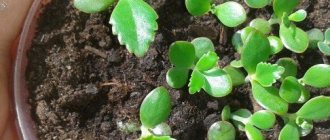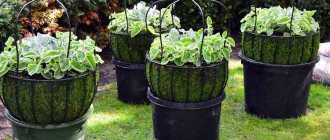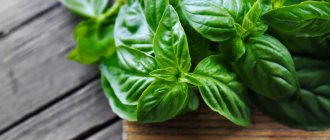Soil acidity is the reaction of the soil to the interaction of rocks buried in the earth. It is of great importance in the cultivation of any cultivated plants. To determine acidity, you can contact an agrochemical laboratory. But not everyone has such an opportunity. How to determine the acidity of the soil yourself? There is a pH scale by which you can measure the reaction of the soil. If its indicator is 4.5, it means that the soil is highly acidic, from 4.5 to 5.0 - moderately acidic, 5.5 and more - neutral. You can determine this indicator yourself.
Acidity Meter Help
The easiest and most effortless way to determine the acidity of the soil is to purchase a special device. Of course, this is not an option, because not everyone has the opportunity to purchase an expensive purchase, but it will not hurt to know how to use the device.
Only after a cloudy puddle forms in the hole, you can lower the device with a probe into the mud. It is important that the probe of the device is absolutely clean, first wipe it with a napkin. It is recommended to perform this procedure throughout the entire area, if the readings of the device do not differ much, calculate the average.
How to correctly decipher the readings of the device? It's simple:
- above 7 pH - alkaline soil;
- 7 pH - neutral;
- below 7 pH - acidic.
How to reduce or increase acidity in the country
If measurements have shown that too acidic environment prevails in the soil in the country, it must be deoxidized. There are several ways to do this:
- Lime, previously slaked with water, is introduced into the soil at the rate of 1 hundred square meters:
- strongly acidic pH level - 50-75 kg;
- medium acid - 45-45 kg;
- slightly acidic - 25-35 kg.
- With limestone flour (another name is dolomite), you can not only reduce the acidity of the earth, but also saturate it with magnesium, calcium, and other microelements. But this method will be inferior in speed to slaked lime.
The relationship of soil acidity to plants
Knowing the acidity of the soil you're working on isn't just for information. The main thing is to put this information into practice. Gardeners should consider the effect of soil acidity on plants. After all, the nutrients that they bring into the soil dissolve and assimilate in different ways in different soils, are more or less available for plantings.
Thus, phosphorus, zinc, iron, manganese, etc., are better absorbed by plants in an acidic (or slightly acidic) environment. Strongly acidic soil makes it difficult and does not contribute to the enrichment of plants with nutrients, and besides, the plants grow worse, become more susceptible to diseases.
To provide timely and necessary assistance to your plantings, you need to know what is the acidity of the soil on your site.
Video "How to determine the acidity of the soil"
If the acidity is increased, aluminum and manganese accumulate in the soil, which interfere with the access to the roots of phosphorus, potassium, magnesium and calcium; bacteria that process organic fertilizers and turn them into the "correct" form for assimilation by the plant die. The low pH allows poisons and heavy metals to penetrate the roots of the plant unhindered.
As a result of irrigation and fertilization, the acidity of the soil increases, inevitably.Therefore, it is necessary to artificially help the soil to reduce acidity.
I bought 10 liters of soil and even watercress feels bad in it ... The package says: pH 5.8-6.2 - that is, slightly acidic. I decided to check if this is so.
Determination of soil reaction using litmus test paper
How to determine the acidity of the soil yourself at home? For these purposes, kits are sold in specialized stores. They include 50 or more strips impregnated with reagents and a color scale. It is used to determine the acidity of the soil independently. To do this, you need to take samples of land from different places of your personal plot, moreover, the depth of their occurrence should also be different. Next, you should place the material in cheesecloth, dip it into distilled water (4-5 parts of it per 1 part of soil) and leave for five minutes. Then a litmus strip is taken and lowered into a container with water and soil for a couple of seconds. The color scale will show the pH values.
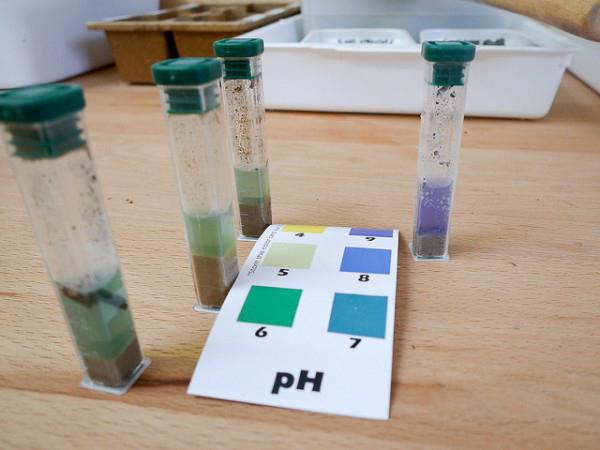
You can do it differently. Separate part of the earth, pour distilled water into it and stir until a slurry is obtained. Insist 15 minutes and mix again. After about five minutes, the water will peel off the ground (it should be clear). An indicator is placed in it and the pH reading is taken.
The red color of the strip means that the soil is acidic, orange - moderately acidic, yellow - slightly acidic, greenish - neutral. Having determined the acidity, you will understand whether you need to add lime to the soil to neutralize this reaction or not.
Baking soda and kitchen vinegar
The easiest way to determine acidity is with regular table vinegar. How to do it? Take a small piece of glass and sprinkle some soil on it. It is important that the soil is taken from a depth of at least 20 cm. It remains to pour a few tablespoons of vinegar on the ground and mix well with a stick. Now watch the reaction:
- lack of reaction - acidic soil;
- violent, with abundant foam - alkaline;
- a little foam is neutral.
Pour soil (also taken from a shallow depth) into a small container, add a little distilled water and stir until the soil turns into thick mud. A tablespoon is enough - pour it into a container and combine with the soil. The appearance of a reaction indicates that it is necessary to deal with acidity, and if no changes are observed, the soil is neutral, you can safely grow your favorite crops.
Calcium content in soil
If the land in our garden contains a lot of calcium, then the following weeds willingly grow on it - cocotum, wilted thistle, poppy seed, larkspur, field thistle, field mustard, yellow alfalfa, field bark, spring adonis, or adonis.


Kokorysh


Wilted thistle


Poppy seed
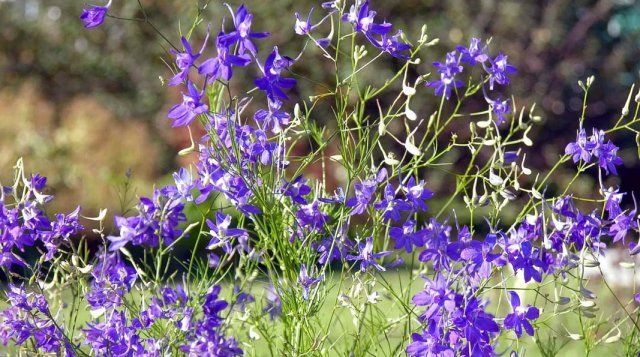

Larkspur field
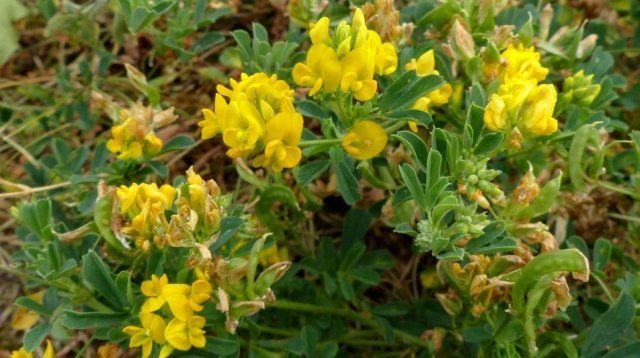

Alfalfa yellow
In turn, the following plants signal the earth that is poor in calcium - passerine sorrel, silver cinquefoil, tricolor violet, blue cornflower, field navel, pharmaceutical chamomile, odorless three-ribbed (chamomile).
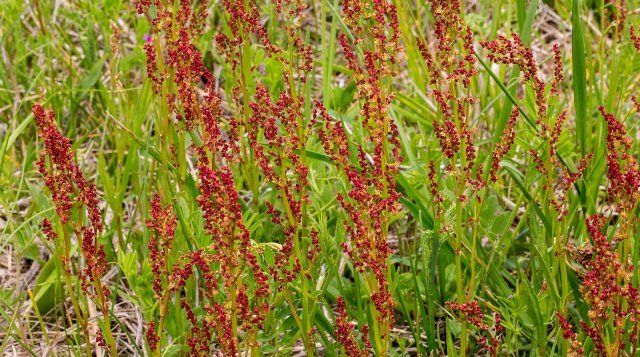

Sorrel
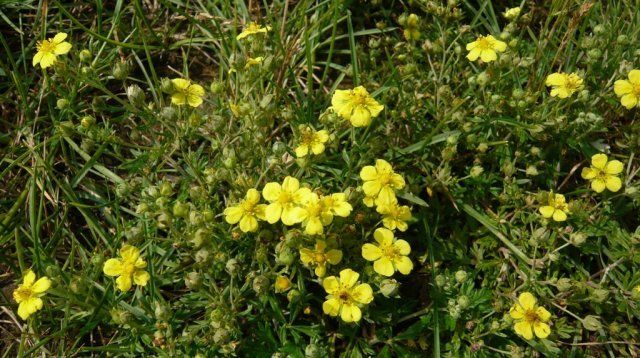

Silver cinquefoil
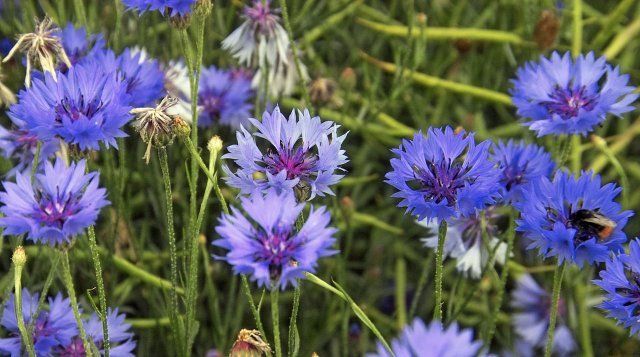

Cornflower blue
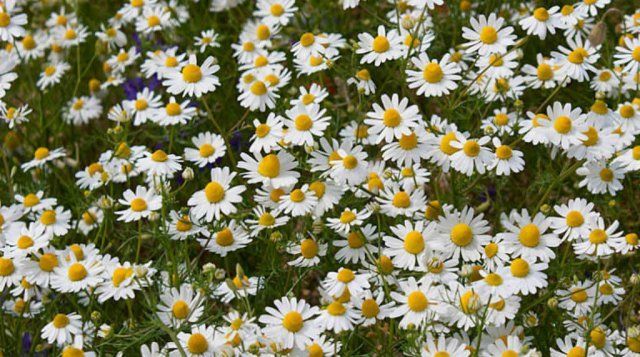

pharmaceutical camomile
Folk methods and means
A reliable and reliable way to determine soil acidity is laboratory analysis in a special laboratory. For this, soil should be collected in a clean container. It is advisable to take samples in dry weather. If you plan to evaluate a large area, you need to excavate the land in several places. The containers are marked with numbers.
To determine acidity with your own hands, there are a number of devices and methods:
- using a special device;
- by the fauna growing on the site;
- using chalk;
- using a litmus indicator.
There are also several folk recipes that will help you analyze which category the soil belongs to in the tomato growing area.
With the development of technology, manufacturers offer to purchase pH meters of various brands that will determine the acidity of the soil in a matter of seconds. These are compact devices with a range of different functions. To carry out the experiment, the pH is immersed in the soil with a special end and indicates the acidity with an accuracy of tenths. Depending on the modification, it can be a scale or a digital display.
A number of devices have memory functions, as well as a built-in hygrometer, with which you can also determine the level of natural soil moisture.
The acidic soils on the site can be inferred from the visual assessment of useful crops that grow in the beds. Plants are deficient in minerals and nutrients, which inevitably affects their appearance.
Pay attention to the ridges with beets. Red streaks on beet leaves signal increased acidity. The uniform green color of the leaves and red petioles indicate a neutral soil reaction. Coloring beet tops red means acidic soils. The culture itself prefers an alkalized environment.
In beds where garlic, cabbage, onions or beets grow splendidly, neutral soil. A rich harvest of radish, cucumbers, eggplants, peas, zucchini, potatoes means their growth on slightly acidic soils. In acidic areas, parsley, carrots, sorrel grow remarkably.
By the weeds
Having determined which weeds most often grow in your beds, you can draw a conclusion about the nature of the soil in the garden:
- thickets of nettle, wheatgrass, burdock, clover, field bindweed, alfalfa indicate an alkaline reaction;
- Acid soil is preferred by bellflower, daisies, field horsetail, plantain, horse sorrel, cinquefoil, wood lice, creeping buttercup, mint.
DETAILS: How to treat scab on an apple tree - folk methods of struggle and chemicals
Areas where weeds of a certain type grow abundantly must be treated with appropriate fertilizers.
With chalk
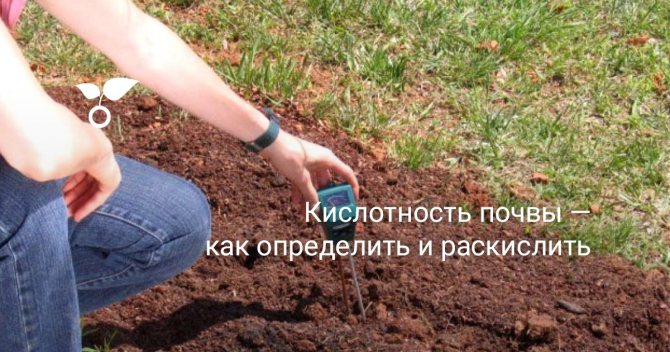

Another way to independently determine the acidity of the soil on the site is to use chalk. Take a regular schoolbag and grind it up. Ordinary whitewashing is also suitable without adding any substances to it.
Samples of land about 3 tbsp. l is placed in a glass transparent bottle or jar, filled with warm water 5 tbsp. l and add crushed chalk 1 tsp. A fingertip or rubber glove is pulled on top of the neck. The contents of the jar are mixed by gentle shaking. Filling a glove or fingertip means an intense reaction between ingredients. The evolution of gas when mixing earth, chalk and water means an acidic reaction.
Litmus paper
The acidity of the soil is easily determined using a litmus indicator. In specialized stores, ready-made kits are sold with prepared paper strips, which are impregnated with special reagents.
To determine the acidity index, a scale is provided in the kit, where, according to the color intensity, you can find the color match of the experimental litmus paper. The set includes several dozen paper elements (usually 50-80) for determining acidity at home.
To find out what acidity the soil is in your area, follow these steps:
- fence the land in several places;
- make a notch not only from the surface, but also in the recess;
- place the taken samples in containers and mark;
- take each material and place it in a piece of bandage or gauze;
- immerse the wrapped soil in a container of distilled water. The volume of water should be 5 times the volume of the earth sample. That is, if you analyze 1 tbsp.l of soil, then the distillate should be at least 5 tbsp. l .;
- let the sample sit in the liquid for 5 minutes. This is necessary for the reaction of dissolution of substances in soil in water;
- dip the litmus paper from the kit into an experimental container for 2-3 seconds;
- take out the indicator and wait for the reaction in natural conditions.
Litmus paper can be colored pink, orange, yellow or greenish.
If it is not possible to determine the acidity of the soil in a laboratory way, as well as the impossibility of conducting experiments using litmus papers or a special device, use folk methods:
- visual assessment of soil layers. For the experiment, it is necessary to dig a hole 25 cm deep. For these purposes, an ordinary bayonet shovel is suitable. Examine the walls of the fossa. If there is a white interlayer, acidic soils in the analyzed area;
- assessment of waters in drainage. Look for grooves in your area or inspect drainage channels. Rusty water and a rainbow film on the surface of the liquid indicate a strongly acidic reaction;
- using currant or cherry leaves. For your own experience, take 4-5 shrub leaves and pour 200 ml of boiling water. Wait for it to cool. Then dip the soil into the liquid (at least 2 tbsp. L). The color of the infusion will change. Pink color will mean acidic, blue - alkaline, greenish - neutral;
- using vinegar essence. Take regular 70% vinegar and pour it on the ground. Hissing and producing a whitish haze will indicate an alkaline reaction. Bubble formation indicates neutral acidity. Adding water and a pinch of soda to the vinegar, then pouring it onto the soil, where foam forms after absorption, indicates that the soil in this place is acidic.
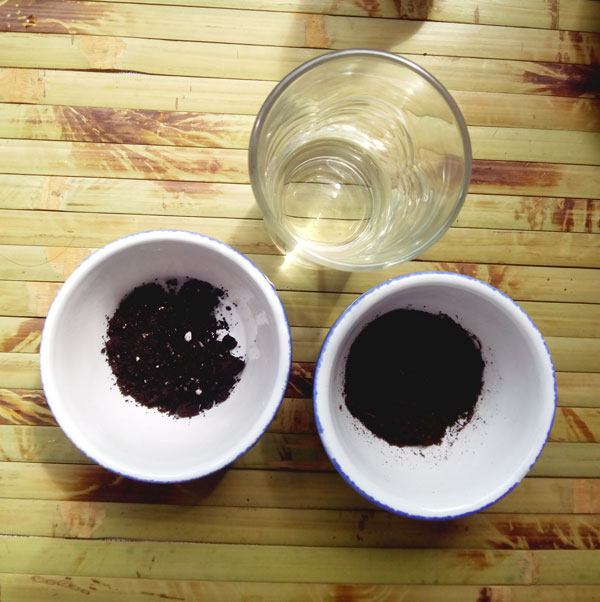

Simple and affordable reagents that every summer resident has will help determine whether lime application is required for tomatoes to reduce acidity or not.
Determining the acidity of the soil is a process, the results of which are needed by every owner of a personal plot. It is most correct to perform soil analysis at the initial stage of the development of a land plot. However, it is never too late to find out the features of the soil of the site. If you still do not know the acidity of the land on which you grow plants, you should determine it. Your plant care will become more intelligent and beneficial.
To find out the acidity of the soil, you can use the chemical analysis of the soil, performed by special laboratories. The industry also offers a special device for measuring the pH level of the soil to help the owners of land plots.
Gardeners have accumulated extensive experience in determining the acidity of the soil and independently, according to the plants on the site. At the same time, methods of observation and analysis are also used, and various plants and features of their development become the object of research.
In addition, when determining the acidity of the soil, you can use improvised means:
- Litmus;
- Vinegar;
- Plant based fluids.
DETAILS: Blackcurrant jam: the best five-minute recipes, for the winter, without cooking, jam, jelly. How to cook black currant jam with raspberries, cherries, strawberries, gooseberries, orange?
Let's take a closer look at how you can determine the acidity of the soil at home.
If you want to use special tools, you will have to purchase them in specialized stores. These tools include:
- PH meter
The device for determining the acidity of the soil
Having bought a special device - an acid meter, they determine the pH level of the soil, following the instructions. Since the device has a long dipstick, it is possible to determine the level at different depths. The number that appears on the scale after a while will be enough to correlate with soil types.
It is not difficult to use such a device. However, it is worth buying it if it is supposed to be used repeatedly, for example, by teaming up with neighbors in the plots.The purchase of a single-use device is hardly advisable for most land owners, in which case it is cheaper to purchase special litmus strips.
Litmus paper for self-determination of soil acidity
The purchased indicator strips should also be used in accordance with the instructions. Determining the acidity level using litmus is possible only in a liquid medium. Therefore, a solution should be prepared using the analyzed soil. Soil samples for analysis are recommended to be taken from the entire site.
But even when there is neither a device nor indicator strips at hand, it is possible to determine what type of soil a certain soil belongs to.
Weeds to help
Weeds, which gardeners consider their enemies, can help in this case! Because weeds, like other plants, are selective for the type of soil. Having carefully looked at what exactly prevails on the site, you can quite accurately determine the acidity of the soil by the weeds.
- On acidic soils (clay, peat), due to the high level of soil density, water stagnation is often observed. This will not interfere with the abundant growth of sorrel and plantain, horsetail or mosses, wild mustard, woodlice, sedges, lupins or buttercups.
- Neutral soil (black soil) or slightly acidic soil (loam) is preferred by wheatgrass and quinoa, bindweed and chamomile, nettle, clover and cornflower.
- Alkaline soil (with a predominance of sand) can be recognized by plants, wild poppy or field mustard, wormwood.
You can also determine the level of acidity with the help of other available means, using folk remedies. Of course, you cannot get the pH in specific units using these products. But it is quite possible to get a general impression of the soil on the site.
With soda
Plain baking soda can indicate that the soil is acidic. To use it, you need to mix a small amount of soil with water to get a liquid gruel. Pouring dry soda on top, observe its reaction. An indicator of acidification is the characteristic sizzle of soda.
With vinegar
Phosphorus and potassium in soil
Phosphorus and potassium are no less important for plants than nitrogen. Fertilizers containing these chemical elements are used mainly in autumn, as they help plants to survive the frosty winter. The fact that the soil contains a significant amount of potassium and phosphorus is indicated by the presence of bluegrass and white clover.
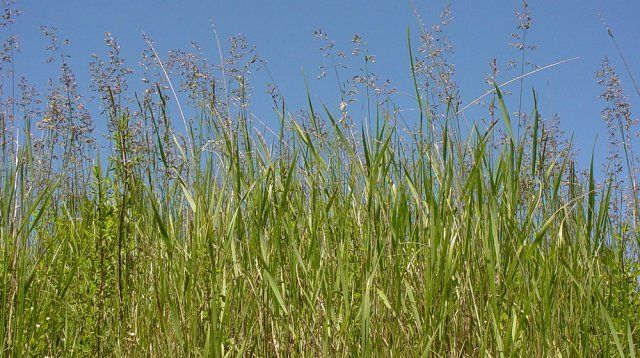

Meadow bluegrass
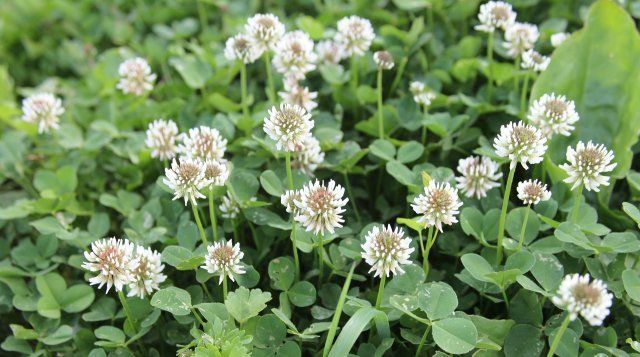

Clover white
The lack of these minerals is evidenced by the bent bent, fragrant spikelet, sod meadow (pike).
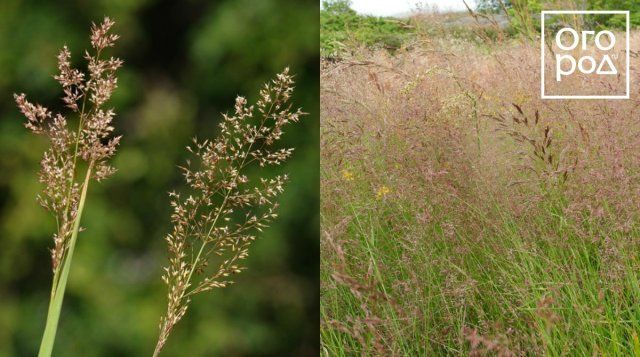

Bent bent
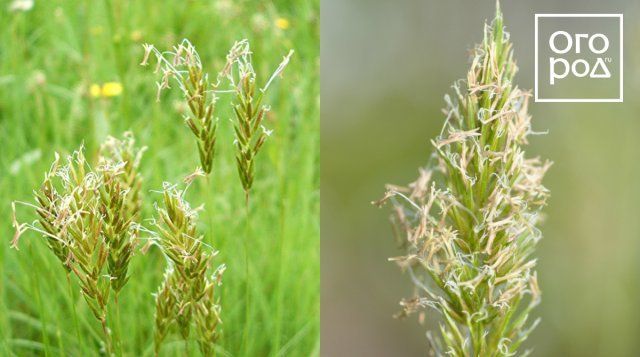

Sweet spikelet
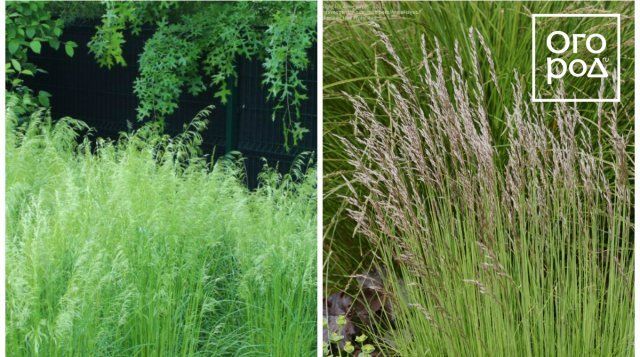

Sod meadow (pike)
Easy Uses of Red Cabbage
In addition to observing the beet tops, you can quickly find out the condition of the soil using red cabbage. I have no doubt that there is a place for this plant in your beds. I must say right away that the method is quite laborious, but do not be lazy, one of the days off can be spent on interesting experiments.
Cut the cabbage thinly, you can even use a good helper - a food processor. Fill it with water and boil for a quarter of an hour. For the experiment, you only need liquid, a kitchen colander will help separate the boiled vegetable. The broth should be a bright purple hue, the pH of the liquid should be neutral.
In specialized stores, you can buy sets of litmus strips at very low cost, which will quickly tell you absolutely everything about the state of the soil. True, there are also important points here.
Collect the soil from a hole dug up to a depth of 30 cm. Sprinkle the soil with plenty of clean boiled water, put it on a plate and put litmus there. Cover it with soil as well.After a few minutes, apply the strip to the included scale and find out if there are any problems with your area.
Laboratory
Both budgetary and private organizations are engaged in soil analysis. These include both the centers of sanitary and epidemiological conclusions and interregional veterinary laboratories. The cost of such a service varies from 400 to several thousand rubles.


In order to direct the soil for analysis, you need to either send it to the laboratory, or wait for the arrival of specialists who will take the material.
In laboratory conditions, the following research options are possible:
- Mechanical analysis (determination of the type of soil, as well as the ratio of soil, sand, etc.)
- Chemical analysis (determination of soil composition, concentration of nutrients, heavy metals, acidity level, general pollution level, etc.)
- Microbiological analysis (determination of the presence of bacteria, fungi and other microorganisms in the soil).
- Mineralogical (determination of primary and secondary minerals in the composition of the soil, determination of the silty, colloidal and clay components of the soil).
Soil analysis for acidity - This is a simple procedure, which will not be difficult to learn. The most reliable accessories for checking land on site are electronic analyzers or litmus strips. Traditional methods also provide important information about the condition of the soil, but it is more expedient to use them as an auxiliary option.
Acidity and garden crops
When planning your beds and flower beds, you should take into account what acidity of the soil should be for certain plants, know their peculiar preferences.
Many cultivated flower crops require soil that is pH neutral.
The acidic soil is suitable for junipers, azaleas, violets, lilies of the valley, lupines, hydrangeas.
Change the color of the garden hydrangea from white to pink
Did you know that the color of garden hydrangea flowers depends on the acidity of the soil, read How to change the color of a hydrangea
A slightly acidic soil will also give the opportunity to develop well the already listed crops. Roses, chamomiles, lilies, phloxes, and also pines grown on such soil will delight.
DETAILS: How many liters of milk does a goat give per day on average?
On alkaline soils, clematis, peony, delphinium and other plants will feel good.
Soil classification by pH
- Strongly acidic soil has pH 4
- Acidic soil has pH 5
- Moderately acidic soil has pH 6
- A neutral environment has pH 7
- Calcareous or basic soil has pH 8
- Strongly limestone or strongly basic soil has pH equal to 9
On acidic soil are grown:
- Cucumbers
- Zucchini
- Tomatoes
- Eggplant
- Pumpkin
- Potatoes
- Sea buckthorn
- Currant
- Gooseberry
- Schisandra
- Roses
- Geranium
- Peonies
- Daffodils
- Tulips
Grows well in soil with neutral soil:
- Cabbage
- Beans
- Peas
- Carrot
- Beet
- Radish
- Celery
- Parsley
- Apple
- Pear
- Plum
- Cherry
- Raspberries
- Garden strawberry
- Dahlias
- Irises
Plants that prefer alkaline soil include:
- Cornelian
- Barberry
- Hawthorn
- Arnica
- Lilac
- Juniper
- Cedar
- Quince
- Violet
- Apricot
- Mulberry
- Lavender
Reducing soil acidity
Knowing which soil is most optimal for the plants that you have chosen for planting, as well as having an idea of the pH level of the soil of vegetable and flower beds, you will know in which area of the site you need to change the soil. It is possible to influence its acidity, to make it more or less acidic, depending on the purpose for growing certain crops. To reduce acidity, "acidify" the soil, it is necessary to add special substances to the soil: ash, lime, chalk or special preparations.
Ways to reduce soil acidity.
One of the available and effective ways to deoxidize the soil is to add wood ash.It is used to lower acidity in the fall, application rate: 600 g of ash per 1 sq. It should be borne in mind that the alkaline base of ash, in addition to deoxidizing the soil, can deprive plants of access to the nutrients available in the soil due to a chemical reaction that has arisen. This should be borne in mind for the next year, using foliar feeding methods.
Lime
Slaked lime (fluff) is a very strong deoxidizer. It is also used in the autumn period, when the application of fertilizers to the soil stops. An even layer of lime applied to the soil is recommended to be embedded in the soil with a rake and then watered. This procedure is carried out before the autumn digging. Lime application rates per 1 sq. m are different: from 250-350 g - on slightly acidic soil to 500-750 g - on strongly acidic soil.
Video "How to determine the acidity of the soil and ways to deoxidize it"
On sandy and sandy loam soil, you can use a less strong deoxidizer - chalk. It can be applied not only in autumn, but also in spring, applying to wet soil. Application rates per 1 sq. 2: from 100-200 g - on slightly acidic soil, up to 300-400 g - on strongly acidic soil.
In addition to the introduction of these alkaline substances, you can deoxidize the soil by purchasing special preparations for a complex effect on the soil. They should be introduced in the fall according to the specified instructions, then it is recommended to water and dig up the soil. You can also use natural deoxidizers - siderates. They are sown before winter, and then embedded in the soil when digging.
PH of soil, what is it
Ph is a unit for measuring the acidity or concentration of hydrogen ions in the liquid phase of the soil.
The acidity of the soil is determined by the ratio between hydrogen ions and hydroxyl ions, chemical compounds dissolved in the water present in the soil contribute to a change in this value.
PH has an important influence on a number of reactions that occur in nature and is critical for the life of soil microorganisms.
As a result, acidity also affects the activity of the plant root system.
Did you know that soil acidity affects the availability of calcium, magnesium, sulfur, potassium, phosphorus, and molybdenum, and helps increase the availability of iron, manganese, boron, cuprum, and zinc?
The theoretical pH measurement ranges from 0 to 14, the lower the value, the more acidic the soil.
If the value is 7, this means that the soil is neutral.
Each plant has a "preferred" pH value, which corresponds to the ideal conditions for its development.
Most crops prefer a pH between 5.5 and 7.
Soil acidification reduces plant growth by reducing the availability of certain nutrients such as Ca (calcium), Mg (magnesium), K (potassium) and P (phosphorus), which contributes to the solubility of toxic elements.
In soil, damaging plants, these elements can be present as Al (aluminum) and Mn (manganese).
Usually, the toxicity of aluminum is the main factor that has a direct effect on plant metabolism, it interferes with the supply of nutrients necessary for plant development.
In addition, the roots shorten and thicken, which affects the plant's ability to absorb water and nutrients, especially phosphate.
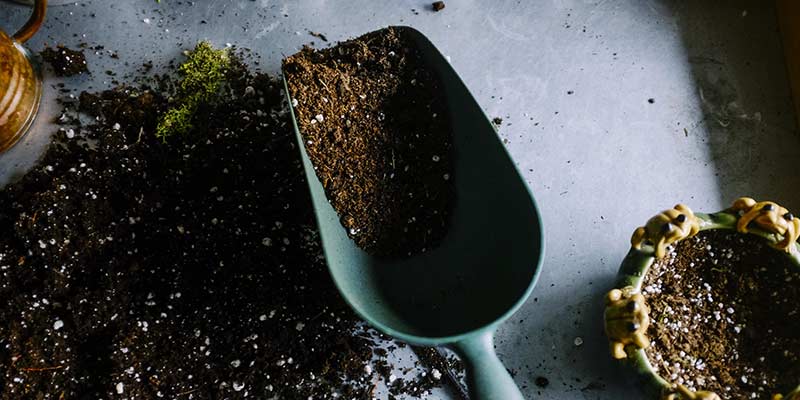

Increasing soil acidity
Often the gardener needs to increase the level of acidity of the soil, make it less alkaline and more suitable for seedlings. To make the soil softer, to saturate it with air, you can use substances that act as soil oxidizers:
- Peat;
- Compost;
- Manure;
- Needles;
- Urea.
All of the above substances, except for needles and urea, are recommended to be added to the soil in the fall, followed by digging.
The needles act as an oxidizing agent when used for mulching.
Urea has the ability to reduce the alkaline index of the soil, to bring it to a neutral state. Therefore, urea is present as an integral component in special complex mineral fertilizers.
When adding oxidants, be aware of changes in soil quality by constantly analyzing its pH index so that the soil does not become too acidic. Armed with the knowledge of soil acidity, how to check this level and change it, you will make your work more efficient.
Soils rich and poor in nitrogen
Nitrogen is one of the main minerals that plants need most in spring and early summer. Considering all the beneficial properties of this macronutrient, it is still necessary to determine how much of it is in the soil, so as not to overdo it with nitrogen fertilization before the start of the season. The fact that the soil is rich in nitrogen is evidenced by the following plants - stinging nettle, common chicory, motherwort, runny, average starwort.
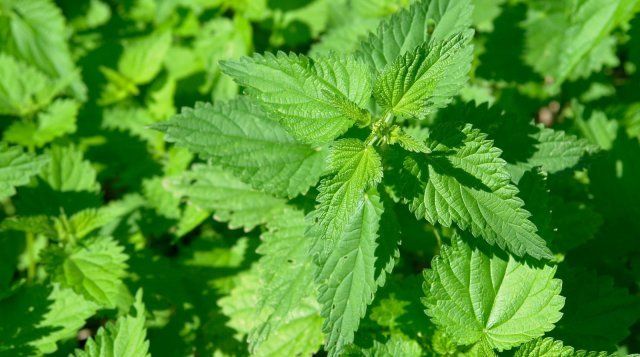

Stinging nettle


Common chicory
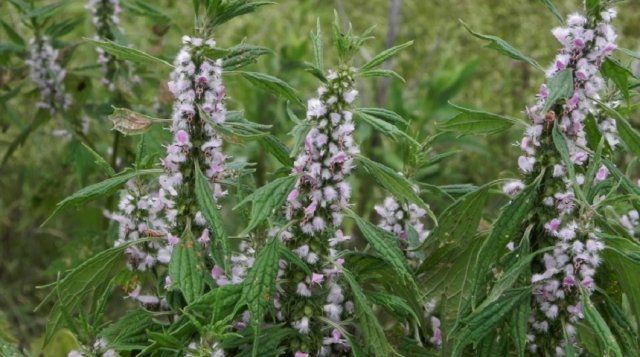

Common motherwort
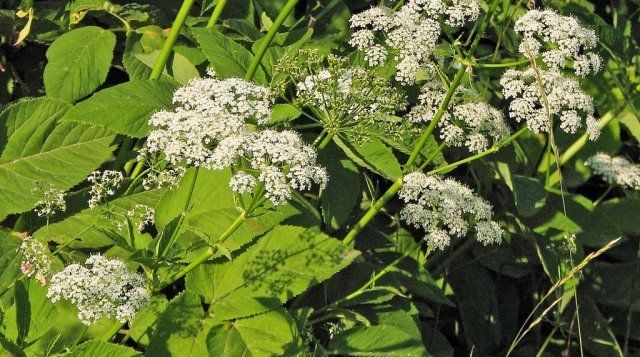

To dream


Medium starfish
The lack of nitrogen is indicated by: tricolor violet (pansies), white clover, lanceolate plantain, common heather.


Violet tricolor
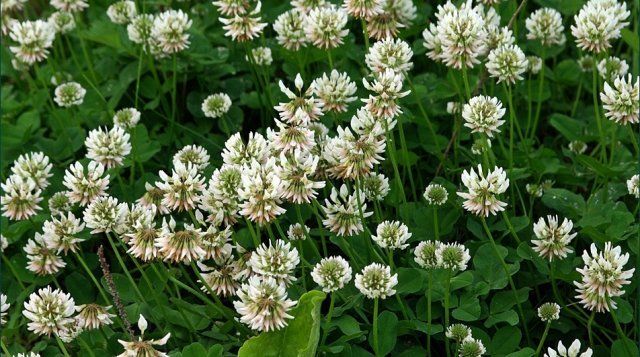

Clover white
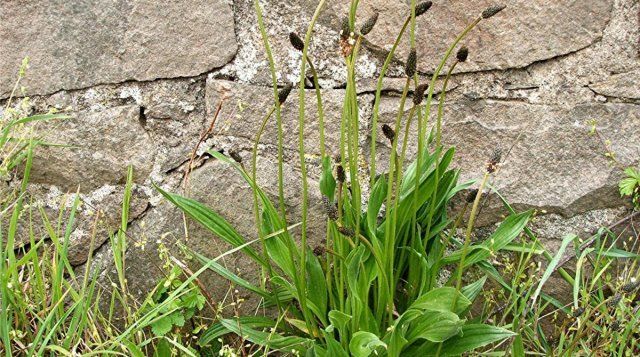

Lanceolate plantain
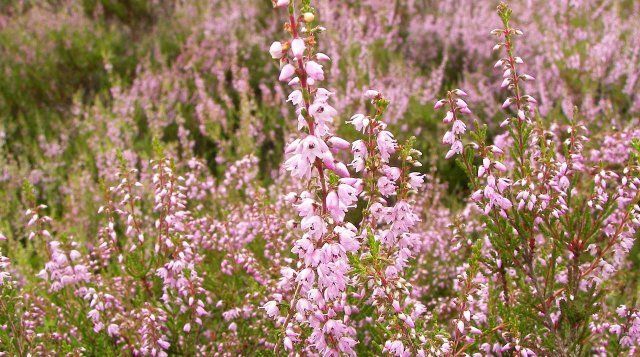

Common heather
Litmus familiar from childhood
Those who remember chemistry lessons from school can easily apply the well-known soil acidity meter - a set of litmus tests.
Using the set is very simple, we will tell you step by step:
- We take a soil sample and fill it with 4-5 parts of distilled water (sold in shops for motorists).
Advice! Plain water from a site from a well or a water supply system is not allowed, since it already has its own acidity indicators and can affect the test result!
- Stir the soil into the gruel.
- We are waiting for the liquid to clear up, it usually takes 5-10 minutes.
- Dip a strip of litmus paper into the liquid.
- We bring the colored paper to the reference scale and compare the degree of color, by which we determine the pH level.
If there is no scale at hand, then you can memorize the colors of the reactions by heart:
- green - alkaline;
- light green - neutral;
- yellow - slightly acidic;
- red - sour.
Devices
Gardeners who keep pace with the times are accustomed to trusting technical means. So there is such a device to determine acidity - a pH meter for soil.
The meter consists of a probe that sticks into the ground and a monitor that displays the level of the pH reaction. They can be connected rigidly or through a flexible conductor. The inside of the device, of course, is more complicated, but why do we need to know about all sorts of anodes-cathodes, the visual result is important to us.
Such instruments for measuring soil acidity are currently produced by many manufacturers: both European, and Chinese, and domestic. In order not to be accused of advertising, we will not name brands and mark their models for better or worse (and they don’t pay us for it :)).
On what soil does woodlouse grow. How to get wood lice out of the garden
Woodlice growing in a continuous carpet is a serious inconvenience in many summer cottages. When digging, small roots remain in the ground, and the plant only revives with a vengeance.
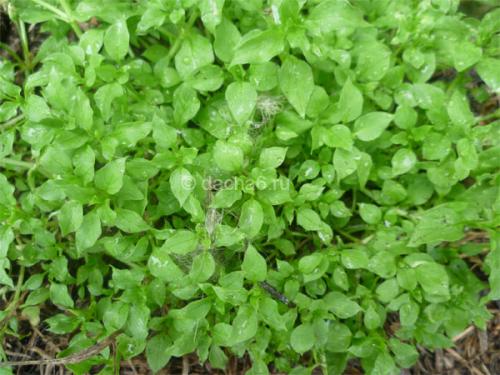

The cycle from seed to adult plant, from which new seeds fall, is 4-5 weeks. Thus, during the warm season, 3-4 generations of woodlice can change. Keep in mind that up to 2500 ripe seeds fall into the soil from one plant. This is why this weed is so dangerous.
How to get rid of woodlice? Consider the most effective methods and prevention:
- This weed grows only on acidic soils. Therefore, from year to year in the fall, when digging, carry out liming by adding ash, dolomite flour or chalk to the ground. Additionally, carry out liming after the snow melts in the spring.Gradually, woodlice will retreat from your site.
- Don't leave even the smallest parts of the weed in the ground. Woodlice is extremely tenacious and can take root from the smallest piece.
- Do not be lazy to weed your summer cottage from weeds more often.
- Woodlice seeds germinate, being near the surface, at a distance of 5-10 mm from it. Loosening the soil with its deepening, sends seeds to a depth, away from light, where they cannot germinate.
- Cover the row spacing of cultivated plants with a black, light-proof foil. Embed its edges into the ground (along the entire perimeter) to a depth of about 10 cm.On top of the film, you can additionally pour 2 cm of soil.
- From herbicides I can recommend the following drugs: "Tornado", "Hurricane", "Roundup". Wear protective clothing when handling. The weather should be calm. You can process it pointwise, for this use an ordinary soft brush and apply the preparation sequentially to each weed plant.
Method number 5. Vinegar or hydrochloric acid
Next, I will describe several popular methods for measuring soil pH. They are not as reliable as various purchased devices, and even more so laboratory tests, but they are cheap and fast in execution..
With this method, you need to lightly pour a handful of soil from the garden with strongly diluted hydrochloric acid or ordinary vinegar. If the moistened soil begins to "boil", that is, small bubbles appear on its surface, then the pH value for this sample is normal. If you have not waited for any reaction, then the soil needs liming.
Weeds
If you are familiar with plant species, especially weeds, then you can easily find out if your soil is acidic or alkaline. If you can sow seeds in your garden, regardless of the pH level of your soil, then in nature this does not happen, and each blade of grass grows only where it is most comfortable for it.
Based on the knowledge of which weeds live on acidic soils, and which ones on alkaline or neutral soils, we can draw a conclusion about the soils of your site.
We list the plants that grow on alkaline and neutral soils:
- mustard;
- alfalfa;
- nettle;
- timothy;
- field grass;
- bonfire;
- chamomile;
- mother and stepmother;
- clover;
- strawberries;
- spiraea;
- bluegrass;
- bindweed birch.
In the following list, we list which weeds grow on acidic soils:
- horsetail;
- Ivan da Marya;
- buttercup;
- bird and sorrel mountaineer;
- horse sorrel;
- chicory;
- wheatgrass;
- mint;
- plantain;
- common sorrel;
- violet;
- oxalis.
If on your site there are plants indicators of soil acidity belonging to different lists, then your soil is heterogeneous, and for each of the zones you need to carry out its own agrotechnical measures.
In addition to the listed plants, most of the conifers can be noted. At least under pine and spruce plantations, the soil is likely to be acidic, and the needles of these trees are even used in vegetable gardens to acidify the soil in the beds.
THERE WILL BE NON-ACID
Most crops grow well and develop in neutral, slightly acidic or slightly alkaline soil. Therefore, in order to create optimal conditions for the plants, the acidity of the soil is reduced, or rather, neutralized.
This can be done by liming or adding calcium.
This material is one of the cheapest used to neutralize the soil. In addition, calcium is also very necessary for plant nutrition, it improves the structure of the soil, making it crumbly, and stimulates the development of beneficial microorganisms. Magnesium has similar properties, so they are often used together.
For deoxidation, ground limestone (contains calcium and up to 10% magnesium carbonate), slaked lime (or fluff), dolomite flour, chalk are also used. By the way, the effectiveness of liming directly depends on how finely the introduced material is crushed.The finer the grind, the faster the neutralization will go. Before adding lime materials to the soil, it is advised to sift through a sieve with a mesh of 1 × 1 mm. Slaked lime is a hard deoxidizing agent, and when applied to the soil, it can burn young plant roots. Therefore, it is buried in the ground in the fall. During the autumn-winter period, lime will interact with soil acids and other compounds and reduce its negative effect on plants. Dolomite flour and chalk are softer soil deoxidizers. They are safe to use even in spring. In addition, dolomite flour enriches the soil with magnesium, potassium, calcium, and some trace elements.
It is not recommended to work with sulfur at air temperatures above 30 °; in the heat it can become phytotoxic.
And in cold weather (at daytime temperatures below 18 °) it is not effective enough.
Soil acidity and its effect on plants
Reference by topic: Determination of soil acidity (high or low) - advice from an agronomist
Method number 8. Chalk
The method is more complicated than the previous ones, but I consider it necessary to mention it for the sake of completeness.
You will need: two tablespoons full of garden soil, five tablespoons of room temperature water, one teaspoon of chalk.
All this stuff is poured into a bottle, on the neck of which a fingertip is put on (for sewing), previously relieved of air. Place the bottle on paper so that the heat from your hands does not distort the results of the experiment.
If the soil in your area does not have enough lime (that is, it is acidic), then during a chemical reaction, carbon dioxide will appear in the bottle. He will begin to rapidly fill the fingertip and he will straighten up. If the soil has a slightly acidic reaction, then the fingertip will straighten only half, with a neutral one, it will not straighten at all.
CAUSES OF SOIL ACIDISATION
Natural biological process. When plant roots breathe and organic residues decay, carbon dioxide is released, which, combining with water, forms carbonic acid. Carbonic acid, in turn, dissolves calcium and magnesium compounds. And rainwater carries these more "mobile" elements from the soil surface to a depth, which leads to acidification.
Application of mineral fertilizers.
Some of them (nitrogenous - for example, ammonium sulfate) acidify the soil.
Acid rain, which often occurs in industrialized areas.
When analyzing soil, it is important to select the right samples for research. It is advisable to take 1 tbsp. spoon of soil from a depth of 20 cm in 8-10 places on the site. Mix the resulting samples thoroughly and use 1-2 tbsp for analysis. spoons of the mixture.
The acidity of the soil directly depends on its composition. So, peat soils are usually acidic, clay-sod and chernozem - neutral, alkaline soils often include heavy clay soils, salt marshes.
Method number 9. Weeds on the site
The simplest indicator of soil acidity is the weeds that have chosen your dacha. The only thing here is to analyze wisely and look only at the most common weeds. After all, those brought in with seedlings or random guests cannot serve as a reliable basis for reliable conclusions.
In the table below, I have provided a list of weeds, sorted into groups according to the nature of their preferred soil.


An error has crept into the plate - nettles on the site signal neutral, not acidic soil!
This is by no means an exhaustive list of methods for determining acidic soil. On my site, I use Garden Show litmus paper to test the acidity of the soil. The kit includes 80 strips, which is enough for me for three years - I usually take measurements twice a year, in spring and autumn. At the same time, I spend 10-12 strips each time in a 5 acres vegetable garden.
Share if you have any of your own methods or best practices on this topic and I will definitely supplement this article with them.
Popular methods for measuring the pH of garden soil are described in detail and interestingly in the video.
What do we know about soil acidity and why do we need this knowledge? This question constantly arises among novice florists and gardeners when they come across this term in the recommendations for growing a particular plant. It arises, and in most cases is ignored ... Beginners consider this knowledge unnecessary and unnecessary. This is aggravated by the fact that it is very difficult to determine the acidity of the soil at home. Indeed, for this, it is generally recommended to use an acidity meter or litmus paper. And not even every professional has them, not to mention amateurs. So plants are planted without taking into account this most important indicator of soil quality.
In order to correctly determine the acid-base balance of the earth, one must have an idea of what it is. In simple terms, this is the ratio of the amount of salts and acids in it. To indicate this balance, a well-known combination of Latin letters is used - pH (short for pondus Hydrogeni). The numbers that follow him are the same indicator. The lower this figure, the higher the acidity of the soil. For land, the following values are commonly used:
- Alkaline soil - pH7 and higher;
- Neutral - pH6.5 - 7;
- Slightly acidic - pH5.5 - 6;
- Acidic soil - pH4.5 - 5 and below.

